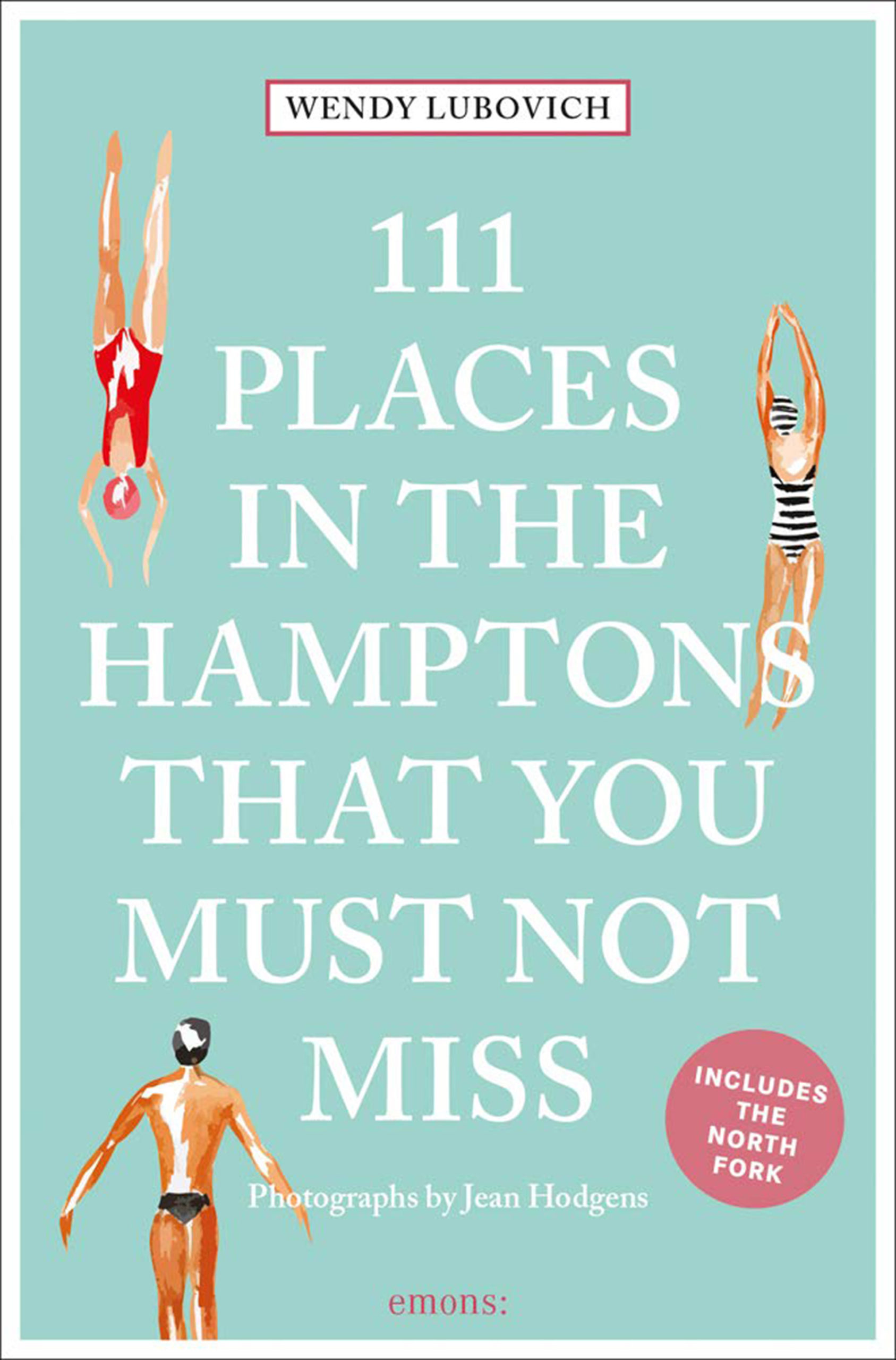The Hidden Hamptons

In 2018, Southampton artist and writer Wendy Lubovich joined the 111 Places illustrated guide book series with “111 Museums in New York That You Must Not Miss (2018)” and now, with Springs-based photographer Jean Hodgens, she offers “111 Places in the Hamptons That You Must Not Miss.” The timing could not be better . . . or worse.
Memorial Day weekend is the start of the Hamptons summer crunch. But because of COVID-19 (which has already advanced the influx of visitors), getting to many sites will prove problematic at best, if not impossible. Still, the pleasure of 111 books is that they can be read as short digests of people, places, and events that have made regions memorable.
Started in 2008, 111s now include hundreds of truly handy books — at 5” x 8” they fit neatly in the hand, the heavy stock paper ensuring easy grasp, and the format of text on the left, color photos on the right guaranteeing fair play for places known and to be discovered. The series, which covers areas all over the country and the world, is designed, the website notes, for “locals and experienced travelers.”
As to the name, 111, the publisher Emons Verlag, based in Cologne, Germany, states that 11 is considered good luck (the annual carnival celebrations in Cologne begin on November 11 at 11:11 AM), and why not add another digit, making it offbeat enough to attract attention? The publisher emphasizes the “special qualities” of 111s that set them apart from other tourist guides: they feature “hidden places, stories, and neighborhoods that unlock the destination’s true character, history, and flavor.” That often means, to judge from the Hamptons edition, touting not just historical figures associated with certain sites, but contemporary celebs.
Authors choose the locations and try to connect them to literature, music, art, culture, and folklore. In the case of “Hamptons 111,” which covers both the North and South Forks, selections include bars, beaches, streets, farms, restaurants, vineyards, specialty shops, gardens, hangouts, and more. A couple of caveats: For locals, some of the lore may be familiar or dubious, especially when anecdotes, lively as they are, rule the one-page text, as in Einstein’s connections in Southold or buried treasure on Gardiner’s Island. (The text does not make clear that the island is not open to the public.) As for Springs General Store, the old gas pumps may be iconic, but the building itself has been featured in a lot of artwork, and prices now hardly reflect a “working-class neighborhood.”
Though “Hamptons 111” has attractive off-season photos, the book’s focus is signaled by its cover — summer hues and swimsuit divers. An alphabetical table of contents points the way in, though the overall arrangement evinces no discernible pattern, as with the bookends, for example: # 1 (67 Steps Beach, in Greenport: “stairway to heaven”) and # 111 (Wyandanch Lane, in Southampton, “the most beautiful road”).
It’s clear that Lubovich was “bewitched” by the wonderful places she went, “a dream assignment.” Her prose, more poetically adjectival than typical for a tourist guide, gives the book a personal, though on occasion awkward, spin. Of the fish farm on Cranberry Hole Road she writes, “Coiffed, this place is not.” And the photographs, while impressive as color compositions, don’t always enhance the text: # 3 The American Hotel Bar, “Sag Harbor’s most civilized spot”? Coopers Beach, the one to go to if you have only one day and one beach to see?
But it’s pandemic time, and “Hamptons 111” contains enough goodies that can be explored.



